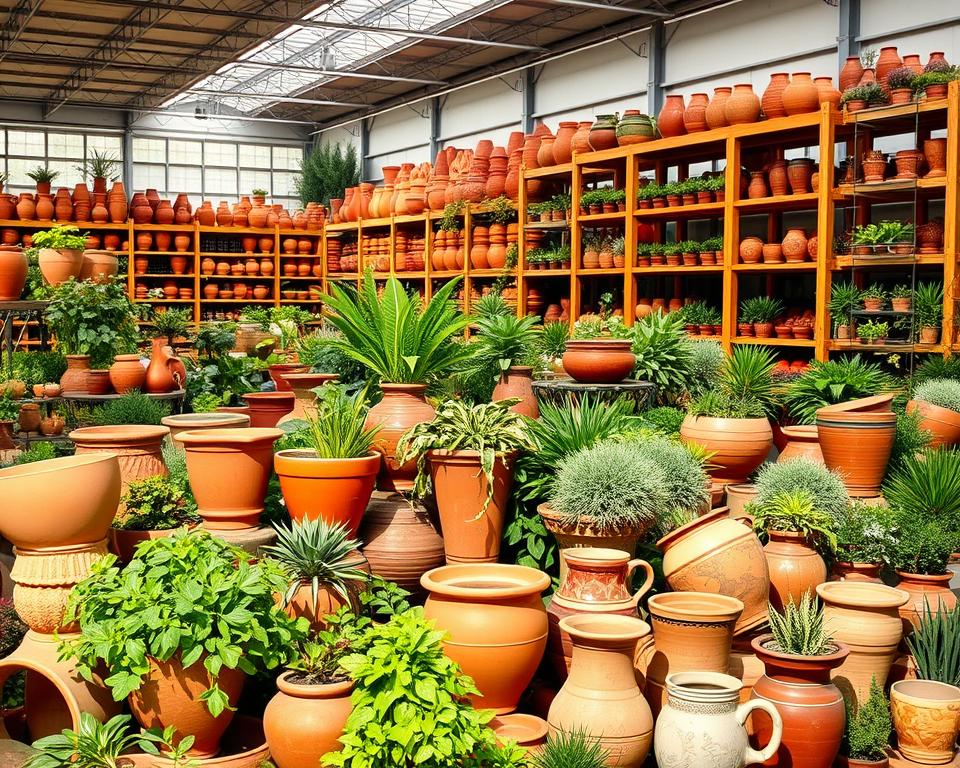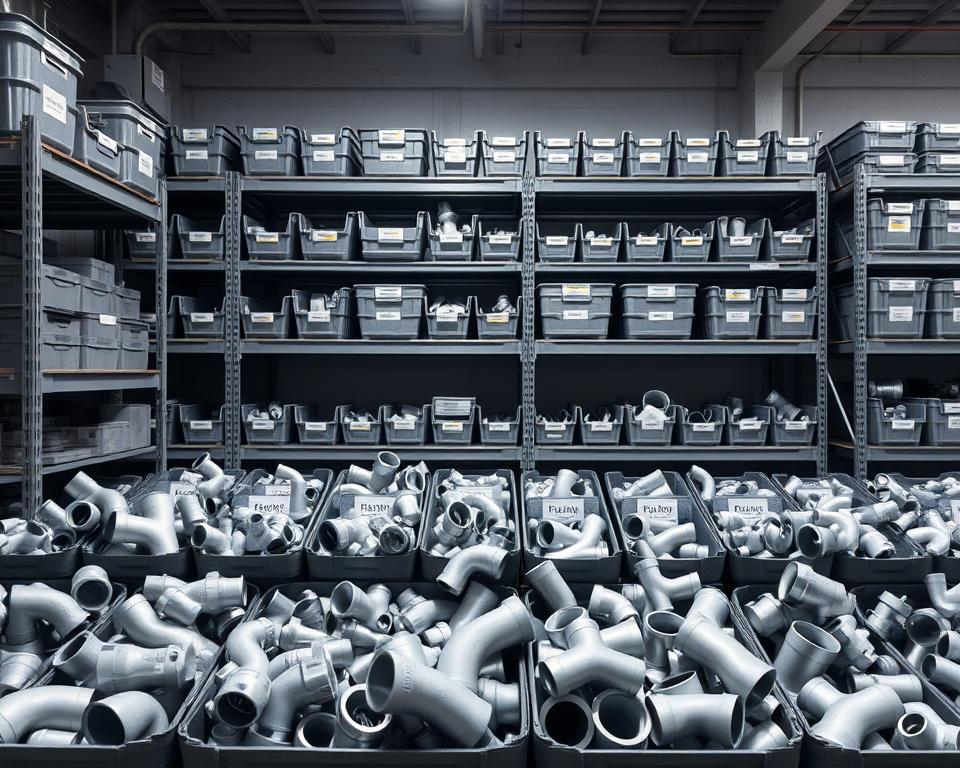K Silicate Facts: Crucial Uses & Advantages
Potassium silicate has been a pillar in various industries for over a century, yet its vast potential remains undervalued. This material is pivotal in sectors from construction to agriculture, emphasizing its key roles and merits. We will delve into the intriguing realm of potassium silicate, also known as K silicate, to grasp its value in contemporary applications.
Exploring K silicate facts exposes its noteworthy impact on improving materials and eco-friendliness. It’s vital for professionals in construction, eco-advocates, and individuals interested by cutting-edge materials. This piece seeks to illuminate the substantial role of potassium silicate in our world.
Key Highlights
- Potassium silicate is essential in the construction industry for its strength.
- This material is celebrated for its environmental benefits and safety features.
- K silicate improves waterproofing and breathability in building materials.
- Its uses go beyond construction into fields like agriculture and industrial coatings.
- Knowledge with K silicate can improve consumer choices in sustainable products.
Introduction to K Silicate
K silicate, also known as potassium silicate, is a material formed by blending silica and potassium oxide. This mixture renders it essential in various industries due to its varied properties. It is widely used as a binder in various materials.
Key features of K silicate comprise its water resistance and durability. These characteristics prolong the life of construction materials but also ensure their structural integrity. Its applications go beyond construction, penetrating agriculture and household products.
With a growing attention on sustainability, potassium silicate is gaining prominence for its environmentally friendly features. It enables industries to reduce their environmental footprint while maintaining material strength and resilience. Thus, it’s a practical and sustainable choice.
| Attribute | Details |
|---|---|
| Chemical Composition | Silica (SiO2) and Potassium Oxide (K2O) |
| Water Resistance | Very effective in moisture barrier uses |
| Durability | Boosts longevity of construction materials |
| Environmental Impact | Promotes sustainable approaches |
What is Potassium Silicate?
Potassium silicate is an non-organic substance celebrated for its diverse deployments and chemical properties. It is characterized as a combination of potassium oxide (K2O) and silica (SiO2). This blend forms a unique adhesive essential across various industries.
The K silicate chemical composition includes about 30% potassium oxide and 70% silica. This proportion provides potassium silicate its unique structure. It renders the compound perfect for use in fertilizers, fireproofing materials, and paints.
Grasping the potassium silicate formula is essential for understanding its value in industrial processes. The formula, K2SiO3, underlines its consistent and dependable chemical structure.
- Extremely efficient as a binder in construction materials.
- Used as an adhesive in manufacturing processes.
- Promotes improved water retention in agricultural applications.
Potassium silicate’s flexibility stems from its presence in both liquid and solid forms. This flexibility fulfills specific demands across various sectors. In agriculture, it is pivotal by enhancing nutrient availability and upgrading soil quality, thus fostering better plant growth.
| Property | Details |
|---|---|
| Potassium Oxide Content | 30% |
| Silica Content | 70% |
| Common Applications | Agriculture, Coatings, Fireproofing |
| Forms | Liquid, Solid |
History and Development of K Silicate
In 1768, the German poet and scientist J.W. Goethe discovered potassium silicate. This discovery laid the groundwork for understanding its chemical composition and potential deployments. The 19th century saw noteworthy developments, spearheaded by German scientist Georg Friedrich Keim. He developed silicate paints, initiating practical uses in the coating industry.
Throughout its history, potassium silicate has been applied in construction and agriculture. Initially, it was employed to enhance material durability and safeguard surfaces from environmental harm. Its versatility increased over time, enabling it to move into multiple industries like ceramics and textiles.
The 20th century introduced further advancements, thanks to material science developments. Researchers developed new formulations that enhanced bonding and weather resistance. These breakthroughs expanded its use across industries. Today, potassium silicate’s historical uses underscore its ongoing importance in industrial processes and sustainable construction.
| Era | Key Innovation | Applications |
|---|---|---|
| 1768 | Discovery by J.W. Goethe | Foundation for chemical grasp |
| 19th Century | Development by Georg Friedrich Keim | Silicate paints and coatings |
| 20th Century | Advancements in material science | Construction, agriculture, textiles |
Environmental Impact of Potassium Silicate
Potassium silicate is notable as a key player in the eco-friendly materials sector. Its low eco-impact distinguishes it from traditional organic coatings, which can release harmful substances. By adopting potassium silicate, industries support sustainable practices and secure structures endure longer.
The green credentials of potassium silicate is backed by multiple vital factors:
- Non-toxic structure, making it safer for both applicators and end consumers.
- Biodegradable properties that minimize long-term environmental harm.
- Better breathability in building uses, which aids control indoor air quality.
Potassium silicate’s use in green building materials greatly decreases environmental pollution from standard coatings. Its contribution in sustainable architecture is crucial, fulfilling the modern need for eco-friendly construction. Builders gain substantial benefits in performance and environmental responsibility with this product.
| Feature | Potassium Silicate | Conventional Organic Coatings |
|---|---|---|
| Toxicity | Non-toxic | Dangerous by-products |
| Environmental Impact | Low | High |
| Biodegradability | Biodegradable | Not biodegradable |
| Indoor Air Quality | Improves | Can worsen |
Comparison: Inorganic vs. Organic Coatings
The decision between inorganic and organic coatings is vital in construction and manufacturing. Inorganic coatings are distinguished for their durability and environmental safety. They provide distinct merits that render them a chosen choice in many uses.
Inorganic coatings, often derived from minerals like potassium silicate, perform well in resisting water and functioning efficiently in difficult situations. Their antimicrobial characteristics boost hygiene and extend the life of surfaces. This makes them perfect for areas with heavy use.
Organic coatings, conversely, are carbon-based and effective in many circumstances. However, they might not last as long as inorganic coatings and can need more maintenance. This might cause higher costs over time.
| Property | Inorganic Coatings | Organic Coatings |
|---|---|---|
| Durability | High resistance to wear and tear | Average, varies based on formulation |
| Water Resistance | Excellent | Depends, some vulnerable to deterioration |
| Antibacterial Properties | Present | Limited |
| Environmental Impact | Lower toxicity, safer for extended use | Higher volatile chemicals |
| Longevity | Long-lasting, requires less frequent reapplication | Lower lifespan, higher repair costs |
Inorganic coatings are a preferred option for many applications, delivering outstanding performance and environmental benefits. They demand less maintenance, causing them to be a practical option. The appropriate coating can profoundly influence a project’s durability and sustainability. It’s crucial to grasp these differences for better judgments.
K Silicate Facts: Common Uses in Construction
Potassium silicate is becoming increasingly important in the construction sector for its diverse applications. Its special characteristics make it ideal for various tasks, particularly in paints and coatings and as a ingredient in building materials. This compound is esteemed for its potential to improve durability and sustainability in construction endeavors, offering substantial benefits.
Deployments in Paints and Coatings
Potassium silicate is vital in the creation of paints and coatings. It guarantees superb adhesion and protects surfaces against environmental elements, causing it to be key for several industries:
- Mineral paints employ potassium silicate for its durability and breathability.
- Commercial coatings include potassium silicate to improve their performance against weathering.
- Interior paints use its binding properties for a smooth, enduring finish.
Merits in Building Materials
Incorporating potassium silicate into building materials greatly enhances structural integrity. This material strengthens concrete and masonry, delivering numerous advantages:
- It boosts resistance to cracking and wear.
- It improves water resistance, protecting against moisture damage.
- It improves thermal insulation, decreasing energy costs.
The use of potassium silicate in construction highlights its critical role in developing advanced materials and technologies. These support eco-friendly practices within the industry.
| Application | Benefits | Examples |
|---|---|---|
| Paints and Coatings | Resilience, adhesion, weather resistance | Mineral paints, commercial roof coatings |
| Building Materials | Strength, moisture resistance, thermal insulation | Concrete, masonry products |
Potassium Silicate Benefits
Potassium silicate boasts numerous merits, rendering it vital in various sectors. Its wellness merits and eco-friendliness underscore its potential for broader use across industries.
Health and Safety Merits
Its non-toxic nature is a major advantage of potassium silicate. This guarantees it’s safe for indoor settings, enhancing air quality and avoiding health hazards. Moreover, it has low VOC emissions, a quality that is consistent with current market trends. Consumers more and more seek products that focus on health and safety.
Green Credentials
Potassium silicate’s organic makeup makes it eco-friendly. It needs less energy to create than synthetic options, decreasing its environmental impact. As sustainable building practices expand, potassium silicate’s popularity increases. It supports efforts to reduce environmental harm, appealing to eco-aware builders and consumers.
| Feature | Potassium Silicate | Synthetic Alternatives |
|---|---|---|
| Toxicity | Non-toxic | Potentially harmful |
| VOC Emissions | Low | High |
| Energy Efficiency in Production | Lower energy consumption | Higher energy consumption |
| Eco-friendliness | Yes | Varies |
Potassium Silicate Uses in Industry
Potassium silicate is crucial in multiple industrial sectors. It is pivotal in ceramics, agriculture, and manufacturing. Its impact is apparent in improving product quality and durability.
In ceramics, potassium silicate enhances strength and thermal resistance. This causes ceramic products more effective across a diverse variety of applications.
In agriculture, K silicate improves soil structure and nutrient availability. It aids in plant growth, enabling farmers increase crop yields and shield against pests.
The manufacturing industry relies greatly on potassium silicate for its binding properties. It’s used in creating adhesives, sealants, and coatings. These products are recognized for their durability, crucial for industrial applications.
Potassium silicate’s capacity to strengthen materials and enhance thermal stability makes it a top choice for industries pursuing quality and reliability. As innovation progresses, its uses are likely to increase, unveiling new possibilities across sectors.
Fireproofing and Safety Attributes
Potassium silicate exhibits remarkable fire resistance, competent in resisting temperatures up to 1300℃. Its high heat tolerance causes it to be invaluable in construction and manufacturing sectors, where flammability is a major concern.
The flame retardant nature of potassium silicate boosts safety in building materials and structures. It inhibits combustion, serving as a protective barrier against fire hazards. This is vital in environments where fire safety compliance is necessary.
- Prevents ignition, providing additional protection in case of a fire.
- Preserves integrity under extreme temperatures, avoiding structural failure.
- Limits the spread of flames, enabling more time for evacuation and response.
Including potassium silicate into coatings and materials enhances their fire-resistant capabilities. By infusing these safety properties in building projects, it not just adheres to regulatory standards but also enhances overall safety for people and assets.
Water-Resistance and Breathability of K Silicate
Water resistance and breathability are crucial features of potassium silicate in construction. Its unique chemical composition ensures it prevents water entry while enabling moisture to exit. This balance is vital for the durability of building materials.
Using potassium silicate as a coating shields surfaces from water damage. It reduces the risk of mold and mildew, which can harm indoor air quality and building structure. By being breathable, potassium silicate promotes optimal wall performance, boosting indoor health.
Employing potassium silicate in building materials provides major advantages in controlling humidity. It’s particularly beneficial in locations susceptible to high humidity or frequent moisture. Here are the main benefits of potassium silicate for water resistance and breathability:
- Reduces moisture buildup and promotes air circulation
- Stops water from entering surfaces
- Enhances the durability of coatings and finishes
- Adds to energy efficiency in buildings
| Feature | Benefit |
|---|---|
| Waterproofing | Prevents water damage and degradation of materials |
| Breathability | Lets water vapor exit, reducing mold risk |
| Longevity | Enhances longevity of coatings and structures |
| Thermal Performance | Decreases heating and cooling costs through better insulation |
Efficient moisture management with potassium silicate properties boosts the performance and lifespan of construction materials. Embracing these benefits leads to healthier environments and more robust structures.
Climate Durability Features of Potassium Silicate
Potassium silicate coatings exhibit superior weather resistance, causing them to be optimal for outdoor use. They are able to endure rain, snow, and UV radiation, in contrast to traditional organic coatings. Their durability under harsh weather conditions distinguishes them.
One key advantage of potassium silicate is its excellent adhesion and moisture resistance. This ensures the coating doesn’t break down over time, in contrast to other materials exposed to moisture. The result is a protective layer that stops moisture and boosts the structure’s longevity.
Moreover, these coatings maintain their color vibrancy, even under intense sunlight. This feature renders them perfect for outdoor settings where aesthetic is crucial. Both homeowners and builders value their durability and visual attractiveness.
| Feature | Potassium Silicate | Traditional Organic Coatings |
|---|---|---|
| Weather Resistance | Excellent; endures rain, snow, and UV exposure | Moderate; susceptible to fading and degradation |
| Moisture Resistance | High; strong adhesion and limited water penetration | Low to Moderate; prone to moisture harm |
| Longevity | Long-lasting; retains integrity across various climates | Shorter lifespan; requires frequent maintenance |
| Color Retention | High; inhibits fading over time | Low; color might fade quickly in sunlight |
Potassium silicate is gaining popularity in modern construction for its sustainability and durability. This material not only boosts building performance but also boosts their visual appeal.
Principal Components of K Silicate Composition
The potassium silicate formula is significant for its composition, mainly silicon dioxide (SiO2) and potassium oxide (K2O). These elements merge to create a compound with distinct properties. These properties cause it to be optimal for multiple industrial deployments.
This substance’s chemical structure enables it to function as a binder. It fortifies and durability to materials. Its characteristics consist of resistance to water, high thermal stability, and superior adhesion. These features cause potassium silicate vital in construction, agriculture, and manufacturing sectors.
| Component | Function | Properties |
|---|---|---|
| Silicon Dioxide (SiO2) | Forms the backbone of the structure | Provides stability and durability |
| Potassium Oxide (K2O) | Boosts bonding capabilities | Boosts water resistance |
| Water | Solvent carrier | Aids in use |
Grasping the potassium silicate formula and its chemical makeup is key to utilizing its full potential. Its special properties cause it to be a go-to solution for experts globally. It is notable for its effectiveness across multiple industries.
Raising Consumer Awareness and Informed Choices
Raising awareness about potassium silicate products is vital to advancing sustainable and safe building material choices. By comprehending the benefits of K silicate, consumers can take selections that benefit their projects and the environment.
Potassium silicate is versatile, notably in paints and coatings. It offers advantages like improved durability, fire resistance, and eco-friendliness. Yet, misconceptions about its use are common, underscoring the need for consumer education on its properties and benefits.
- Significance of comprehending the components of potassium silicate products
- Acknowledging manufacturers committed to sustainable practices
- Evaluating the performance characteristics of K silicate in real-world applications
By focusing on these areas, consumers can take informed decisions. This strategy not only leads to better selections but also advances the use of eco-friendly alternatives in construction and renovation.
| Feature | Potassium Silicate Products | Standard Options |
|---|---|---|
| Eco-Footprint | Low impact; natural mineral | Higher impact; synthetic chemicals |
| Durability | Long-lasting; moisture-resistant | Variable; may require more regular applications |
| Fire Resistance | Highly fire-resistant | Often flammable |
| Ease of Use | Straightforward to employ; versatile | Can demand specific conditions for proper application |
Comprehending potassium silicate products assists in making environmentally conscious purchasing decisions. When consumers select informed choices, they generate a need for safer, sustainable building materials.
Conclusion
The summary on potassium silicate emphasizes its vital significance and wide-ranging deployments across industries. It’s a key element for sustainable growth. Its part in improving construction material durability and delivering environmental benefits is undeniable. K silicate is distinguished as a vital asset in a market that’s progressively shifting.
Looking ahead, the future of K silicate appears positive with persistent innovation. Increasing interest in potassium silicate among industries marks a shift towards sustainable product development. Its robust properties cause it to be a top choice for manufacturers aiming to improve their products and promote environmental goals.
In wrapping up this discussion, it’s clear that potassium silicate will continue to be essential for advancing sustainable practices. Its extensive uses doesn’t just improve product performance but also advance environmentally conscious solutions. This commitment to K silicate use is vital in our journey for a sustainable future.



